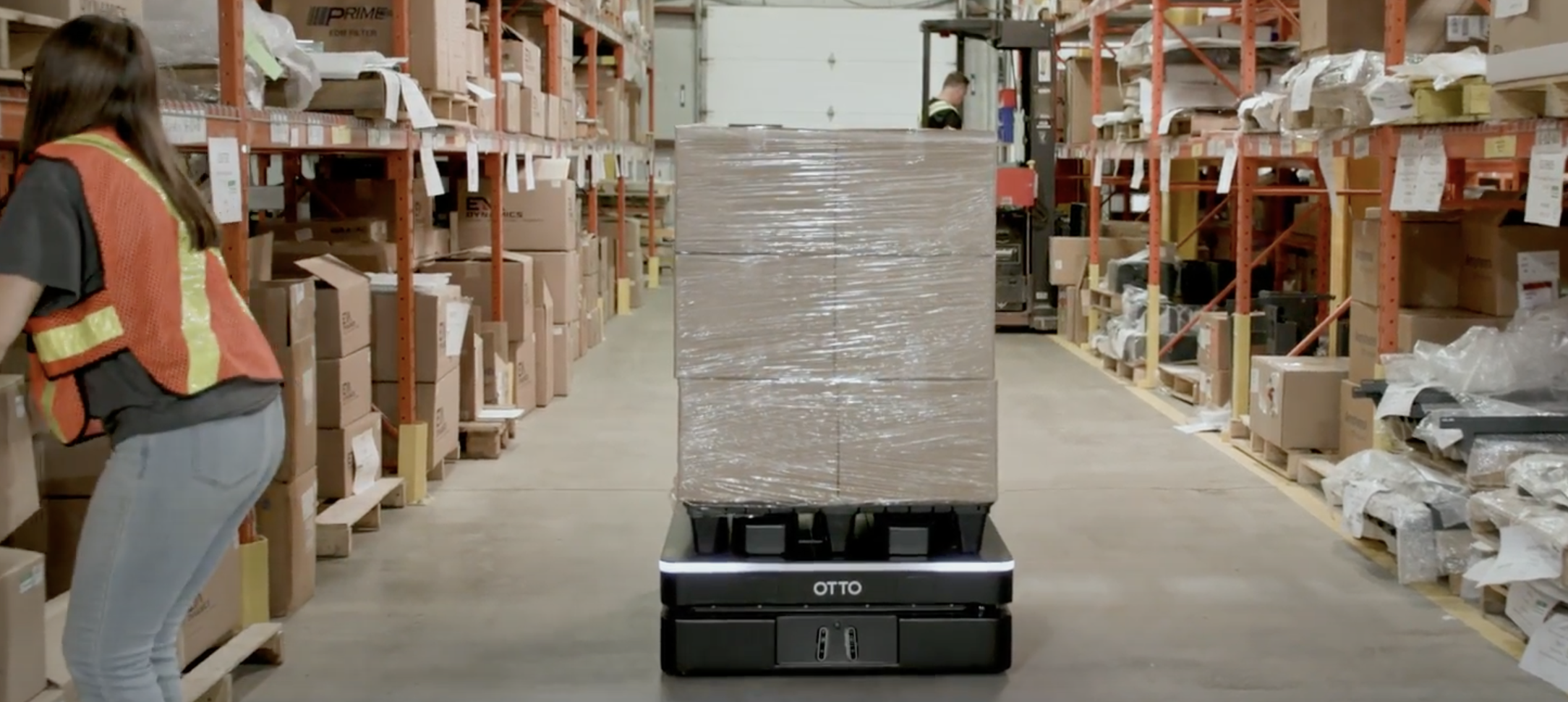Blog
AMA: How do OTTO AMRs optimize both speed and safety?

In this blog series, manufacturing facilities and warehouses ask their top industry and product questions, and OTTO Motors’ material flow experts answer them.
Manufacturing facilities and warehouses are looking to move as much material as possible, as quickly as possible, without compromising on safety. With a greater emphasis on safety, some autonomous mobile robots (AMRs) may be overly cautious, lowering productivity levels. With a greater emphasis on delivering client ROI, some AMRs may not be trusted to operate in a shared environment with workers and other equipment. The ideal solution optimizes both productivity and safety by leveraging best-in-class autonomy software and safety technology.
How do OTTO AMRs optimize both speed and safety?
OTTO AMRs are designed and built with safety-rated hardware, adaptive fieldsets and world-class autonomy software to maximize client ROI and throughput, while ensuring the safety of the people and other equipment in the facility.
- The safety of OTTO AMRs begins with its safety-rated hardware. LiDAR sensors act as eyes, tied directly to the robot’s safety circuit and braking system.
- Just like when driving a car, the faster an AMR is traveling, the more time and distance it requires to stop. Every combination of robot speed and direction has its associated safe stopping distance, or “adaptive safety field.”
- Adaptive safety fields work like adaptive headlights on a performance car, shifting and extending out in the direction the robot is turning.
- Through these adaptive safety fields, the AMR LiDAR sensors are programmed to understand safe stopping distances, triggering a safety stop the moment an obstacle is detected inside its current safety field.
- However, if AMRs always traveled at top speeds and only relied on this hardware for safety, they would be in a constant reaction mode, slamming their brakes to prevent near-collisions.
- Instead, OTTO Autonomy works proactively, leveraging a facility-level view to anticipate where safety would step in and make adjustments so that stopping is not needed. This allows our AMRs to achieve industry-leading average speed without compromising on safety.
- Further improving average speeds, OTTO Autonomy plans the most efficient routes while obeying traffic rules, replans when blocked, and uses its adaptive fieldset technology to prevent slowdowns around turns, intersections, equipment and people.
By combining speed and safety, the AMRs move at faster speeds over shorter distances to deliver higher ROI, increased throughput and improved safety.
Written by Daniel, Senior Training Content Developer at OTTO Motors.




